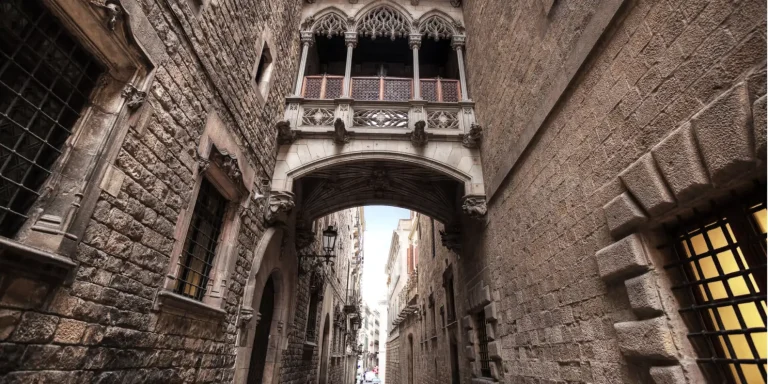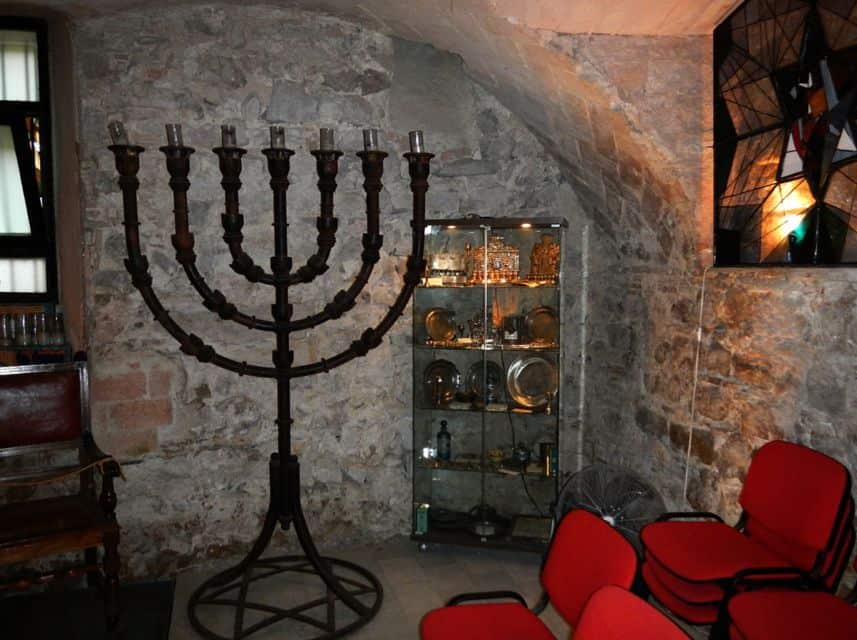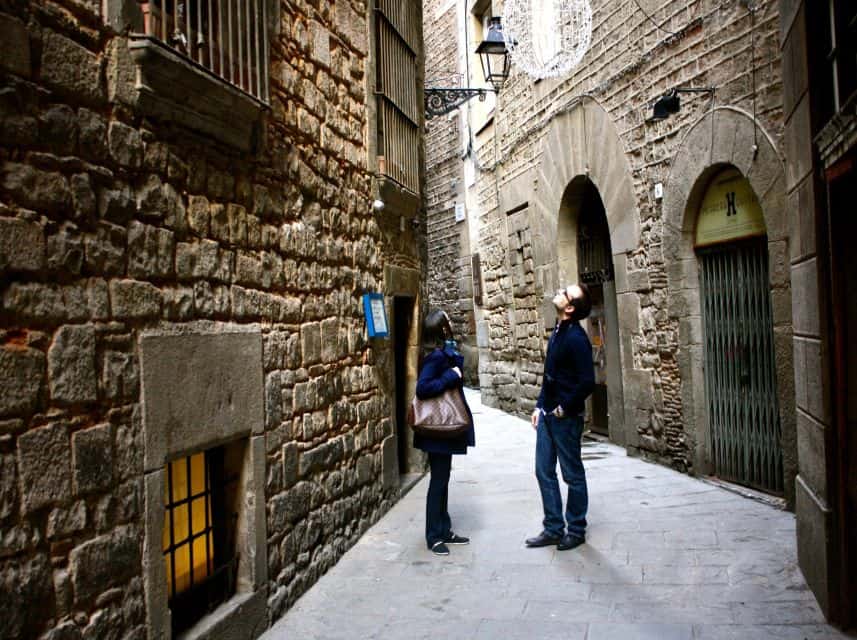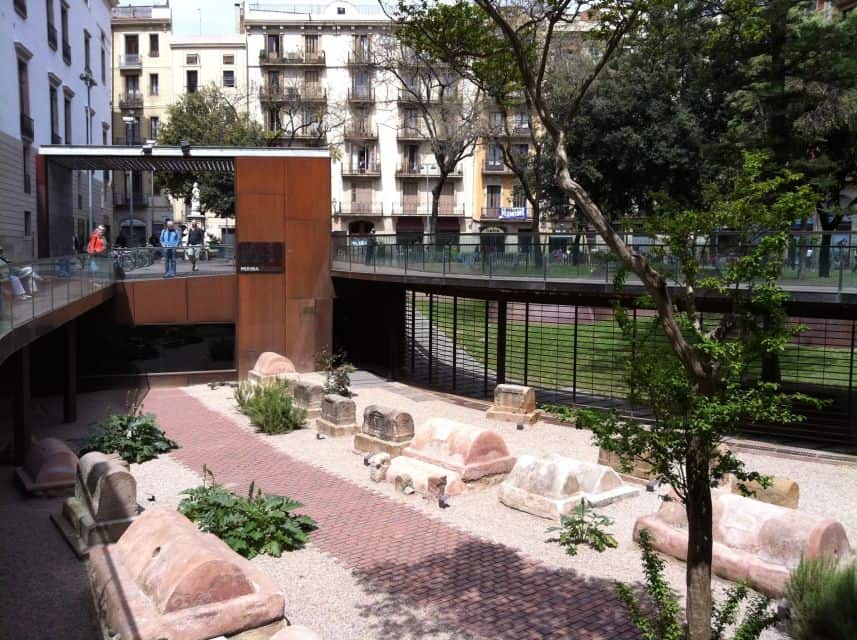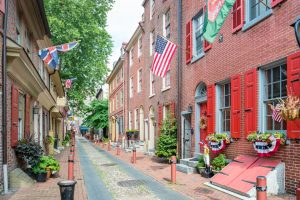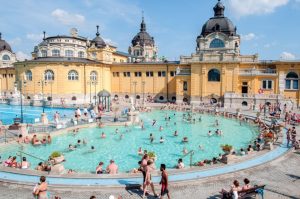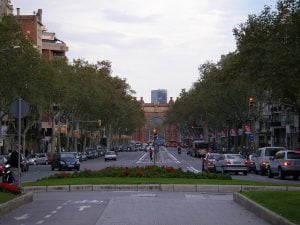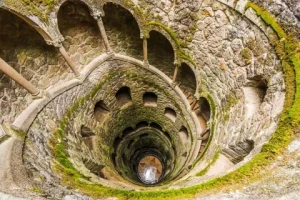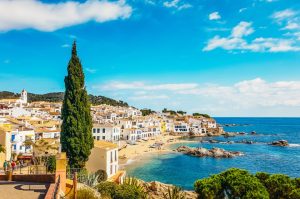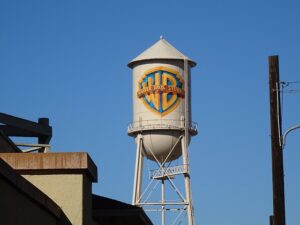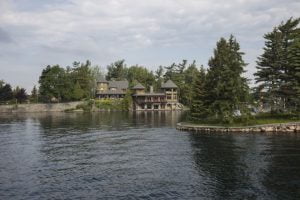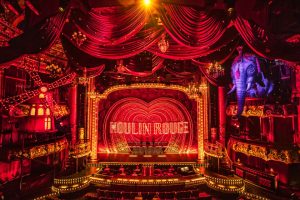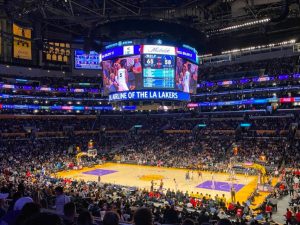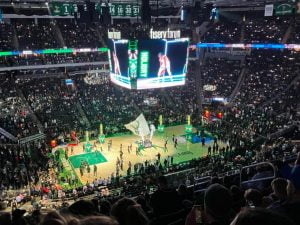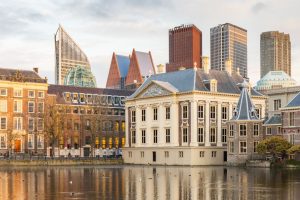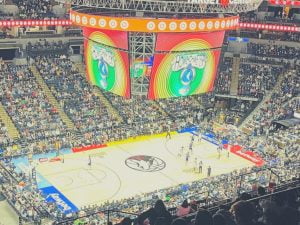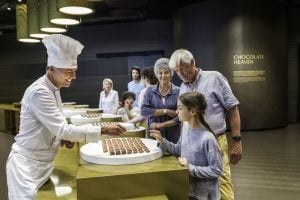The Gothic Quarter in Barcelona
A comprehensive guide for travelers
Barcelona, a city of vibrant colors, mouth-watering flavors and rhythms that invite everyone to enter the exciting symphony. Inside the bustling city square you will find everything from everything - from golden beaches, through vibrant markets to picturesque streets, and among all of these there is one corner that contains the essence of the Catalan capital - the Gothic quarter, or as the locals call it - 'Barry Gothic'.
The Gothic quarter is a maze of narrow and picturesque streets from the Middle Ages surrounded by magnificent squares and centuries-old buildings that whisper stories about the city's past. This area is much more than a central neighborhood in the city, it is a time capsule that captures the spirit, history and culture of Barcelona. Every cobbled path, narrow alley and sunny broad hums stories of days gone by, and when we travelers wind through this labyrinth, we ourselves swing between eras, between the layers of history and culture of the magnificent city.
We gathered here today to explore together the Gothic quarter - its historical significance and its architectural wonders, through the must-see sites in the quarter, the restaurants, the streets and the attractions that you should not miss. Let's get going.
The Gothic quarter - nice to meet you
At the heart of the cosmopolitan city of Barcelona, sandwiched between the famous Ramblas to the west, and the magical Via Laietana to the east, lies a historical kingdom, a living museum that stands as a testament to Barcelona's vibrant history.
The Gothic Quarter is located right in the heart of the city, and serves as the focus of Barcelona's historical and cultural narratives. Its 'labyrinth' streets and alleys stand in stark contrast to the day and night pattern of the nearby Ischampela district, and therein lies its charm. The winding streets, some of which still bear remnants of the old Roman walls, lead to hidden squares and courtyards, each of which echoes stories of days gone by.
But of course it is much more than the streets and buildings, and the soul of the district lies in what fills these spaces - hipster cafes, colorful tapas bars, luxury boutique shops and art markets, all of which infuse life into the historic district.
And why is it called the 'Gothic quarter' you ask? Because of the dominant architectural style in the district. While the quarter has remnants from the ancient Roman period, its golden age was in the Middle Ages, between the 13th and 15th centuries, a period characterized by the peak of Gothic architecture. Many of the district's most iconic buildings, from churches to palaces, display this intricate and impressive style, hence the name.
For those who want to discover the spirit of Barcelona, its historical, cultural and artistic soul, the Gothic Quarter offers exactly that - an immersive journey between worlds, a bridge between eras, a testimony to the eternal allure of the capital of Catalonia.
History in brief
The story of the ancient Gothic quarter begins somewhere in the time of the Romans, the 1st century BC, when an ancient Roman settlement called "Barcino" was established in the area. Fascinating evidence of that ancient settlement can still be found today, when in various parts of the district you will find sections of the old Roman walls, which in the past protected the city, and even an ancient Roman temple called the Temple of Augustus, which is located under the 'Plaça del Rei' (Plaça del Rei), the History Museum of the city.
After the fall of the Roman Empire, the ancient settlement passed under the control of many peoples, with ancient Visigothic rule and even a brief Islamic presence. During the Middle Ages, the district experienced significant growth, when many magnificent buildings were built there - from the Royal Barcelona Cathedral with its amazing cloister and complex facades, to countless magnificent palaces and public squares. Also the Jewish quarter of Barcelona, called 'El Col', becomes a significant part of the district during this period.
And as in any good story, not everything is rosy, and in the 17th and 18th centuries the quarter faded away with the Renaissance period, when the city of Barcelona flourished and developed, and it seems that the Gothic quarter was left behind. The new districts in the city grew, while many of the buildings of the Gothic quarter were neglected and forgotten.
But then came the period of awakening, you can call it the period of the 'Renaissance' (rebirth) of the Gothic quarter. In the 19th and 20th centuries, with the rise of Catalan nationalism, the locals realized that a nation that does not know its past, its future is clouded, and therefore worked hard to restore and preserve the historic buildings of the Gothic Quarter. During this period, "neo-gothic" buildings were also added in an attempt to beautify the area even more and turn it on the one hand into a lively residential area and on the other hand into a prominent tourist attraction.
Today, Barcelona's Gothic Quarter is one of the city's favorite and most vibrant districts, standing as a testament to Barcelona's rich history and cultural development. Over the years, the district has become an essential tourist attraction, attracting millions of tourists a year as it manages to combine history, art and contemporary Catalan life.
Main attractions in the Gothic Quarter (Barri Gòtic)
The Gothic Quarter, with its narrow streets and historic atmosphere, contains many attractions that offer insights into Barcelona's rich history and culture. Here are the places you simply must not miss when visiting the Gothic Quarter:
Barcelona Cathedral (Catedral de la Santa Cruz y Santa Eulalia):
A majestic Gothic cathedral dedicated to the saint 'St. Ullia', is the jewel in the crown of the Gothic quarter. The cathedral, built between the 13th and 15th centuries, boasts intricate facades, beautiful chapels, and a stunningly beautiful cloister. The roof of the church offers a breathtaking panoramic view of the city, and the cathedral is without a doubt one of the must-sees of the vibrant Gothic quarter.
Plaça Reial
A lively square mesmerizing in its beauty, nestled among tall palm trees and historic buildings, all surrounding the lively square and the fountain in its center. During the day, the Plaza Real is full of tourists who frequent the excellent restaurants and colorful cafes, and at night the Plaza is considered the heart of the Gothic quarter, and you will find crowds of young people, locals and tourists alike, enjoying a Catalan paella in one of the many restaurants or an intoxicating drink in one of the bars in the Piazza.
Plaça del Rei
The Plaza del Rey is a place where history is right under your feet, the place where King Ferdinand and Queen Isabella received Christopher Columbus after his voyage to America. Today, inside the ancient Gothic building is the Museum of the History of the City of Barcelona (MUHBA), which provides a fascinating look at the Roman ruins of Barcino, the ancient Roman city.
Temple of Augustus (MUHBA Temple d'August)
A minute's walk from the Plaza del Rey you will find the Temple of Augustus, or rather the remains of the temple, three amazing columns that have survived since Roman times, part of an ancient Roman temple dedicated to the revered emperor Augustus. These pages offer insights into the architecture of the ancient Roman city of Recino, all in the heart of the vibrant Gothic Quarter.
Bishop's Bridge (Pont del Bisbe)
An architectural wonder that connects two government buildings in the district, an ancient and magnificent bridge in Gothic style with detailed and complex architecture. Along the historic street where the bridge is located, Carrer del Bisbe, you will find lovely boutique shops, historic buildings and above all old world charm.
Sant Felip Neri Square
St. Philip Neri Square, which stands in the center of the Gothic quarter, manages to remain hidden and hidden from the main streets of the district. At the heart of the square you'll find an ancient church bearing scars from a tragic bombing during the Spanish Civil War, standing as a poignant reminder of the city and country's turbulent past.
Picasso Museum (Museu Picasso)
While the Gothic Quarter is primarily a celebration of the Middle Ages and Roman times, the Picasso Museum, housed within a series of medieval palaces, introduces visitors to more contemporary artistic genius. The museum presents an extensive collection of the artist, and follows the story of the legendary Pablo Picasso and the years that shaped him and made him a world art genius.
El Call: Barcelona's Jewish quarter
In the heart of the Gothic quarter of Barcelona there is a smaller quarter hidden, a historic and picturesque neighborhood called 'El Cal', the Jewish quarter of the city of Barcelona. The district received its unique name from the Hebrew word 'Kahl', due to the desire to turn the area into a Jewish community, a Jewish assembly. From the 9th to the 14th century, this area was considered a vibrant center of Jewish life, when its inhabitants were an integral part of the fabric of the city of Barcelona.
Like the Gothic Quarter, the area is characterized by narrow and winding alleys and ancient buildings, similar to many medieval Jewish quarters throughout Europe. These streets, which in the past were crowded with Jewish merchants, scholars and craftsmen, speak volumes about the day-to-day life of that community.
Prominent sites in the Jewish quarter
Major Synagogue (Sinagoga Major de Barcelona): One of the most significant and famous landmarks of El Kal is the ancient synagogue, which is considered one of the oldest synagogues in Europe. This small building, hidden in a narrow alley, was rediscovered in the 20th century and is now used as a museum, one that offers insights into the Jewish history of Barcelona.
Plaça Sant Jaume: A mesmerizingly beautiful square that now houses some of the city's main government buildings, and was once the vibrant heart of the Jewish quarter.
The Jewish Quarter Museum - MUHBA El Call: This museum delves into the history of the Jewish community of Barcelona, with a variety of exhibits of objects, documents and photos, providing a glimpse and comprehensive understanding of the life of the Jewish community in Barcelona during the Middle Ages.
Where are all the Jews?
The Jewish community in Spain faced many challenges, when in the 14th century these reached their peak. In 1391, a series of pogroms swept through Spain, naturally also affecting the city of Barcelona. Many Jews were forced to convert to Christianity, while others were killed and wounded. Those families that survived the inferno faced another decree, when in 1492 the Alhambra Edict was published by the Catholic kings Ferdinand and Isabella, who ordered the expulsion of all Jews from Spain.
For centuries, al-Kal's Jewish heritage lay dormant, with many of the buildings being used by the city's Christian residents. In the second half of the 20th century, the Jewish community in the city reawakened, and as a result, the interest in the story of the community. This led to archaeological excavations, reconstructions and the establishment of museums dealing with the Jewish community. Today, the Jewish community in Barcelona remains small, numbering a few thousand, but the El Cal district stands proudly as a testament to its vibrant past.
The culture of the Gothic quarter
Strolling through the Gothic Quarter is like walking inside a time capsule, one that manages to capture the soul of the city of Barcelona. Beyond the obvious historical and architectural significance, the Gothic Quarter also offers deep cultural insights into the traditions, art and social dynamics of the city.
The Gothic Quarter, given its importance in Barcelona's history, is a hotbed of Catalan pride. The flags hanging from balconies, the Catalan language written on signs, all point to national pride. In this province you can really understand the essence of what it means to be Catalan, as distinct from the broad Spanish identity.
From Gaudi's designs to Picasso's exhibitions, you can't argue with Barcelona's art scene. Here, in the Gothic Quarter you will find countless labyrinthine streets filled with art galleries, boutique shops and vibrant street performances that showcase the city's creative energy.
Throughout the year, the streets and squares of the Gothic Quarter are full of joy and color, and when you hear the season, there are festivals and events that present local traditions - from the construction of human towers (castles) to fiery processions. These events offer a deep dive into the heart of local customs and community spirit.
The culinary scene of the Gothic Quarter
The Gothic quarter of the city, the heart of old Barcelona, is a melting pot of cultures, stories and tastes. Over the centuries, countless influences have combined to create a rich gastronomic tapestry that attracts locals and tourists alike. A visit to the Gothic Quarter would not be complete without tasting the wonderful local dishes, visiting one of the recommended restaurants and above all soaking up the delightful culinary atmosphere.
Among the things you should not miss in the quarter is the tapas tradition of Spain, in the Gothic quarter you will find countless unique tapas bars that offer classic Spanish dishes alongside delightful Catalan specialties.
Must try: "Boquerones en vinagre" (anchovies in vinegar) or "chorizo a la sidera" (chorizo sausage cooked in cider).
Considering it is a coastal city, seafood and fish are an essential part of the city's culinary scene. The Gothic quarter borders the historic city port, and in the restaurants of the quarter you will find fresh fish dishes alongside delicious squid and mussel dishes.
Must try: "Suquet de peix" (traditional fish stew) and "fideuá" (seafood paella).
Catalan cuisine, wrapped in the Mediterranean tradition, emphasizes fresh ingredients from the land and the sea.
do not miss Dishes like "Escalivada" (roasted vegetables) and "Cannelloni" (Catalan style cannelloni filled with roasted meat).
The narrow lanes of the Gothic Quarter contain some of the oldest shops and bakeries in the city, and you can't end a visit to the Gothic Quarter in a better and sweeter way than a visit to one of these delightful establishments.
Must try: "Crema Catalana" (the Catalan version of crème brûlée).
The recommended restaurants in the Gothic quarter
The four cats
Cuisine: Catalan, Spanish
A historic cafe-restaurant, serving traditional Catalan dishes in a delightful setting. The place is loved by locals and tourists alike, and has been home to many celebrities including Pablo Picasso. The restaurant is considered very popular, so it is recommended to make a reservation in advance.
Restaurant address: Carrer de Montsió, 3, 08002 Barcelona.
Bodega Biarritz 1881 Tapas bar
A local and intimate tapas bar, offers a huge selection of tapas dishes and the service is nothing less than wonderful.
Restaurant address: Carrer Nou de Sant Francesc, 7, 08002 Barcelona.
Restaurant Can Culleretes
Cuisine: Catalan
One of the oldest restaurants in Barcelona, operating since 1786, the restaurant offers a delightful journey back in time as it mainly specializes in traditional Catalan dishes, including stews and grilled meats.
Restaurant address: Carrer d'en Quintana, 5, 08002 Barcelona.
Sensi Tapas
A popular tapas establishment, Sensi restaurant succeeds in combining traditional flavors alongside excellent modern techniques. The restaurant menu presents classic local dishes alongside delightful modern twists.
Restaurant address: Carrer Ample, 24, 08002 Barcelona.
Shopping guide to the Gothic Quarter
The Gothic quarter, with its narrow and winding streets and its historical atmosphere, is a paradise for shopping lovers, as it offers a unique combination of traditional shops, luxury boutiques and chains of modern stores. Whether you're looking for special souvenirs or you're in the mood for a luxurious shirt, you'll find everything in the Gothic Quarter.
Portal de l'Angel: One of Barcelona's main shopping streets, boasting a mix of local and international brands. The bustling pedestrian mall is a perfect starting point for your shopping trip.
Carrer d'Avinyó: A street full of wonderful boutiques, most of them from local designers.
Carrer del Duc: This street is full of jewelry boutiques offering both contemporary and traditional designs.
Carrer de la Palla: a street full of souvenir and art shops where you can find handmade ceramics, textile details and traditional Catalan products.
Tips for buyers
Bargaining: Although this is common in some markets, it is not customary to haggle in shops in the city. However, you can visit a discount in a polite way, mainly in independent and small boutiques and of course not in chains like Zara or Mango.
Discounts!: The main sale seasons in Barcelona are after Christmas (January) and during July. During this period, expect to find tens of percent off in many stores in the city - global chains and local boutiques alike.
Activity time: Many small shops still observe the traditional "siesta" custom that we Israelis can only dream of, so these may close in the early afternoon, usually from 14:00 PM to 16:00 PM, before reopening in the evening.
Nightlife in the Gothic Quarter
The Gothic Quarter becomes something special when the sun goes down, and as dusk descends on the city, the ancient streets of Bari Gothic come alive with an electrifying energy that fuses the historic atmosphere of the district with the lively charm of modern Barcelona. From intimate bars housed in centuries-old buildings to dance floors with contemporary beats, the nightlife in the Gothic Quarter is as diverse as its history.
Recommended bars:
La Plata: A simple and charming establishment, serving a limited but classic menu of Catalan dishes accompanied by excellent local wines.
Bar address: Carrer de la Mercè, 28, 08002 Barcelona.
Bodega La Palma: With more than 80 years of history, the magnificent establishment offers excellent wines and simple and delightful tapas dishes in an intimate and wonderful atmosphere.
Bar address: C. de la Palma de Sant Just, 7, 08002 Barcelona.
night clubs
Macarena Club Barcelona: A legendary institution in Barcelona's house and techno scene. The intimate setting gives you a close look at the best DJs and DJs in town.
Club address: Carrer Nou de Sant Francesc, 5, 08002 Barcelona.
Jamboree: A historical institution located in the amazing Plaza Real. In the early evening the club hosts jazz concerts and as the night progresses it turns into a lively hip-hop and punk club.
Club address: Pl. Real, 17, 08002 Barcelona.
Navigation in the Gothic Quarter
Navigating a historic and bustling area like Barcelona's Gothic Quarter can be both exhilarating and challenging. To ensure a smooth experience and get the most out of your visit, it is recommended to walk along it. The narrow alleys and the many areas that are closed only to pedestrians, make the district a paradise for walking enthusiasts and a hell (well, maybe we exaggerated a bit) for buses and large vehicles. It is recommended to wear comfortable shoes and go explore the picturesque alleys of the district.
To get to the Gothic Quarter just get off at one of the following metro stations: Jaume or Liceu.
To sum things up, the Gothic quarter really has everything - narrow historic alleys next to wide shopping boulevards, international fashion stores next to tiny boutique stores, first class clubs next to intimate bars and magnificent buildings next to old and gray ones. Barcelona's Gothic quarter exposes us to the city's glorious past, providing us with a glimpse of life here right in the Middle Ages, a glimpse that is hard to get anywhere else in the world. So next to the famous sites like the Sagrada Familia and Park Guell, make sure you don't miss the heart and soul of the city of Barcelona - the magnificent Gothic Quarter.

